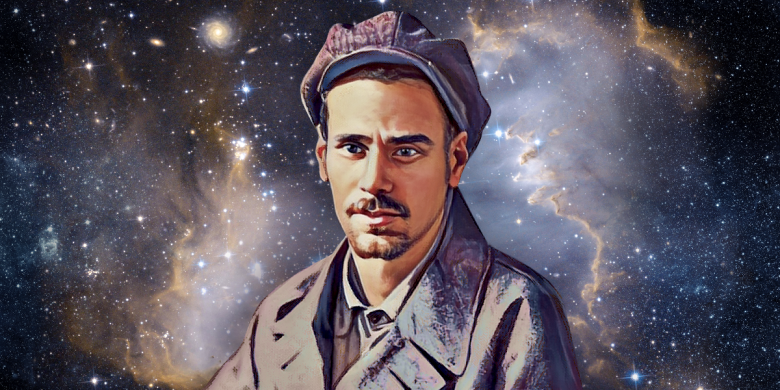In honor of the International Day of Human Space Flight and Ukraine’s Day of Rocket and Space Industry Workers, we would like to tell you the story of the incredible Ukrainian Yuriy Kondratyuk.
In 1897, Oleksandr Sharhei (Kondratyuk’s original name) was born in Poltava. While still pregnant with him, Sharhei’s mother was arrested for taking part in a protest. She was soon released from custody, but was later confined to a mental institution. She died there when her son was only 12 years old. Oleksandr’s father also died the same year.
He spent the rest of his childhood being raised by his grandmother and grandfather. They sent Oleksandr to the Second Boys’ Gymnasium in Poltava. There he showed a great aptitude for physics, mathematics, and astronomy. Oleksandr wanted to fly into space, and even described his thoughts about it on 104 pages of his school notebook.
In 1916, Oleksandr graduated from gymnasium with a silver medal. In the same year, he entered the Petrograd Polytechnic Institute, but a month later he was drafted into the army.
Until 1918, he fought in the Caucasus against Ottoman troops. When he learned of the October Revolution in Russia, he returned to Kyiv. He was then conscripted again by the White Army, but he deserted and and moved to the city of Smila, Cherkasy region, where he worked at an oil mill.
Oleksandr understood that he could be arrested at any moment, but he found salvation in a tragedy. His acquaintance, Yuriy Kondratyuk, who was only three years younger than Oleksandr and had a similar appearance, died at his Kyiv relative’s house. Oleksandr took on his identity in 1921, and lived the rest of his life under the name Yuriy Kondratyuk.
In 1929, Yuriy self-published the book Conquest of Interplanetary Spaces. In it, he described a “snail route” as the optimal path from the Earth to the Moon. His discovery was used by American astronauts in 1969.
In 1930, Kondratyuk lived in Western Siberia, where he built the world’s largest elevator without metal or nails with a capacity of over 10,000 tons of grain. However, the achievement actually got him thrown in prison, as his bosses thought that his nail-free construction was designed to fail catastrophically and ruin grain. However, his granary actually stood for decades.
Kondratyuk was later transferred from prison to a special work camp for scientists and engineers, and then eventually again to Siberia. After his release, Kondratyuk worked on projects of wind power plants in Crimea, Kharkiv and Moscow. However, when World War II began, Kondratyuk went to fight.
It is not known exactly how Yuriy Kondratyuk died. One version holds that he died in battle, while another says that he died in a German prison camp. Yet another version insists that he survived the war and died in 1952.
Decades later, on the other side of the globe, the United States began launching its Apollo rockets to the Moon using the very same trajectory described by Kondratyuk. One of the heads of the Apollo space program, John Hubolt, recalled, “when I watched the launch of the rocket that carried the Apollo spaceship towards the moon at Cape Canaveral at dawn in March 1968 with a sinking heart, I was thinking at that time about the Ukrainian Yuriy Kondratyuk, who 50 years ago developed the same route on which our astronauts were supposed to fly.”
The memory of Yuriy Kondratyuk is forever imprinted in space. The asteroid 3084 Kondratyuk, as well as a crater on the far side of the Moon, were both named in his honor. In addition, Yuriy Kondratyuk is inducted into the International Space Hall of Fame of the Space History Museum in New Mexico. There is also a monument to him in Poltava.
